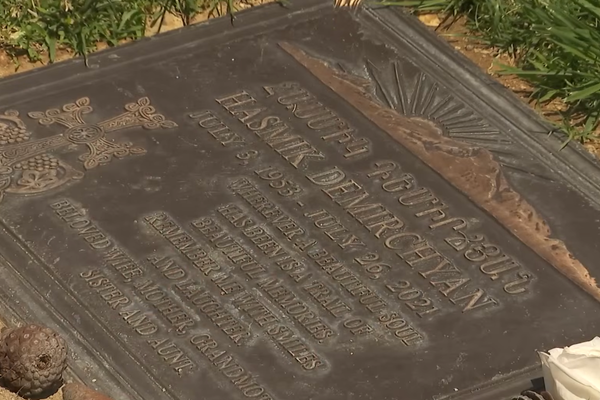
With 18 new faces in his new-look 56 member ministry, Uttar Pradesh chief minister Yogi Adityanath appears to have carried out a skilful act aimed at balancing caste and regions.
In all likelihood, the ministers featuring in the first expansion of his 29-month-old government were picked with an eye on the forthcoming by-polls to 13 assembly seats, followed by the bigger challenge of 2022 UP assembly polls, BJP leaders said.
Key regions of Bundelkhand, western UP and central UP all have found representation in the ministry though there were some dejected faces who missed out both among party functionaries as well as some lawmakers.
Adityanath can have up to 60 ministers in his government; which means he still has room to appoint four more.
Mission Clean?
The easing out of some of his ministers on the expansion eve – BJP insiders admitted that a few of them were forced to put in their papers – was also an exercise to come across as a ‘clean government’, claim party leaders.
That is why there was the added emphasis on probity, the leaders said. They said most of the new faces had been screened by Rashtriya Swayamsewak Sangh, as well as top leaders in the party and the government.
Former basic education minister Anupama Jaiswal, whose personal assistant was caught in a sting operation last year cutting deals, was among those asked to resign. The personal assistant of former backward classes minister Om Prakash Rajbhar too was caught in a similar sting.
He was sacked after the Lok Sabha elections earlier this year, though action against him was more due to him rebelling against the BJP leadership, despite being a minister in the UP government. The conduct of irrigation minister Dharampal Singh, among the ministers who were asked to put in their papers, too wasn’t found satisfactory, party leaders said.
The regional and caste balance of the new team was visible with care being taken to ensure that all the ministers who had been axed or those who quit due to different reasons, were replaced with identical or similar caste groups.
Among the 23 ministers who took oath —18 new faces and five existing ministers who were promoted—six are Brahmins, two Thakurs, two Vaishyas, three Dalits and 10 OBCs, the dominant caste group electorally.
The six Brahmins who figured in the expansion are believed to have been carefully handpicked, ostensibly to shrug off the charge of the Adityanath government favouring Thakurs, an upper caste group to which Adityanath belonged to before he turned a yogi.
“At least now, our detractors should stop putting labels on this government,” said a UP minister refusing to be named.
The new-look Adityanath ministry now has representation of most castes at a time when the Bahujan Samaj Party (BSP), which boasts of loyal Dalit support, readying to contest the upcoming by-polls, likely by September-October, for the first time in seven years. The main opposition Samajwadi Party, enjoying OBC support, is looking to regroup after its humiliation in the 2019 Lok Sabha polls.
Gujjars, a backward caste of influence in western UP that was missing from the Adityanath ministry, finally found representation with the appointment of party functionary Ashok Kataria. Only recently the party had inducted Surendra Singh Nagar of the same caste from the Samajwadi Party to boost its caste outreach.
Caste Balance
Since March 2017 when the 47 member Adityanath ministry was sworn in, three ministers (two Brahmins and a Dalit) Rita Bahuguna Joshi, Satyadev Pachauri and SP Singh Baghel quit after being elected to the Lok Sabha. A fourth minister OP Rajbhar, an OBC, was sacked. Fifth minister Swatantra Dev Singh, an OBC (Kurmi) quit under one-man, one-post principle after being named as the UP BJP chief.
Then on expansion eve Adityanath accepted the resignations of four others – finance minister Rajesh Agarwal (a Vaishya by caste), who said he quit due to advancing age, irrigation minister Dharampal Singh, an OBC (Lodh), Anupama Jaiswal (OBC, Vaishya) and Archana Pandey (Brahmin).
“Each of them was carefully replaced by meritorious ministers whose caste profile was also right. So to balance Anupam Jaiswal’s caste there is Ravindra Jaiswal, Rajesh Agarwal’s Vaishya caste group is now represented in the ministry by Kapil Dev Agarwal, the lawmaker from Muzaffarnagar. Dharampal’s OBC group is adequately represented with 10 ministers from the backward caste. Balancing OP Rajbhar’s absence is Anil Rajbhar who has been elevated. Rita Bahuguna Joshi, Satyadev Pachauri and Archana Pandey were all Brahmin ministers who for different reasons aren’t in the ministry. The party has doubled the number of Brahmin faces as their replacement,” a party leader explained.
The three Dalits inducted during the expansion will increase the party’s dalit outreach, a leader said.







